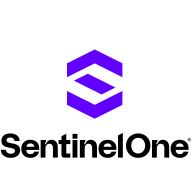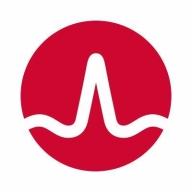

![Threat Stack Cloud Security Platform [EOL] Logo](https://images.peerspot.com/image/upload/c_scale,dpr_3.0,f_auto,q_100,w_64/o0no0it6ybl6satjcxomcblsgmd6.png?_a=BACAGSDL)
Threat Stack Cloud Security Platform [EOL] and Symantec Cloud Workload Protection compete in cloud security solutions. Symantec has a slight edge due to its comprehensive security features appealing to security-focused organizations.
Features: Threat Stack Cloud Security Platform [EOL] provides real-time threat detection, alerting systems, and cloud-native intrusion detection. Symantec Cloud Workload Protection offers advanced threat protection, automated workload analysis, and strong integration with hybrid environments.
Ease of Deployment and Customer Service: Symantec Cloud Workload Protection supports both cloud and on-premises environments with robust customer service. Threat Stack ensures seamless integration within cloud environments and is noted for responsive customer service. Symantec’s compatibility range makes its deployment appealing.
Pricing and ROI: Threat Stack Cloud Security Platform [EOL] is cost-effective, providing a solid ROI for budget-conscious organizations. Symantec Cloud Workload Protection may have higher setup costs, offering significant ROI through enhanced security capabilities for organizations with larger budgets.


| Company Size | Count |
|---|---|
| Small Business | 47 |
| Midsize Enterprise | 20 |
| Large Enterprise | 52 |
| Company Size | Count |
|---|---|
| Small Business | 2 |
| Midsize Enterprise | 5 |
| Large Enterprise | 2 |
SentinelOne Singularity Cloud Security offers a streamlined approach to cloud security with intuitive operation and strong integration capabilities for heightened threat detection and remediation efficiency.
Singularity Cloud Security stands out for its real-time detection and response, effectively minimizing detection and remediation timelines. Its automated remediation integrates smoothly with third-party tools enhancing operational efficiency. The comprehensive console ensures visibility and support for forensic investigations. Seamless platform integration and robust support for innovation are notable advantages. Areas for development include improved search functionality, affordability, better firewall capabilities for remote users, stable agents, comprehensive reporting, and efficient third-party integrations. Clarity in the interface, responsive support, and real-time alerting need enhancement, with a call for more automation and customization. Better scalability and cost-effective integration without compromising capabilities are desired.
What are SentinelOne Singularity Cloud Security's standout features?SentinelOne Singularity Cloud Security is deployed in industries needing robust cloud security posture management, endpoint protection, and threat hunting. Utilized frequently across AWS and Azure, it assists in monitoring, threat detection, and maintaining compliance in diverse environments while providing real-time alerts and recommendations for proactive threat management.
Symantec Cloud Workload Protection automates security for public cloud workloads, enabling business agility, risk reduction, and cost savings for organizations, while easing DevOps and administrative burdens. Rapid discovery, visibility, and elastic protection of AWS and Azure workloads enable automated security policy enforcement to protect applications from unknown exploits.
Threat Stack Cloud Security Platform [EOL] offers robust security features including endpoint monitoring, rule customization, and integration capabilities, with easy connectivity to cloud services like Docker and AWS.
Threat Stack Cloud Security Platform [EOL] provides tools for enhancing security visibility across cloud infrastructure. It supports AWS and Docker integration, facilitating efficient threat detection and management. Users appreciate its capability to configure customizable alerts and monitor endpoints, sessions, API interactions, and cloud services. However, there are areas needing improvement, such as better serverless environment support and reduced alert frequency. The platform services smaller organizations by compensating for limited security resources with its comprehensive monitoring and auditing tools.
What are the key features?In specific industries, Threat Stack Cloud Security Platform [EOL] is utilized for its strength in monitoring cloud infrastructure and preventing unauthorized access. Organizations in fields where cloud operations are critical use it for regular audits and monitoring. Its capabilities in threat management are leveraged to maintain secure operations and compliance, especially where there is no dedicated security team.
We monitor all Cloud Workload Protection Platforms (CWPP) reviews to prevent fraudulent reviews and keep review quality high. We do not post reviews by company employees or direct competitors. We validate each review for authenticity via cross-reference with LinkedIn, and personal follow-up with the reviewer when necessary.